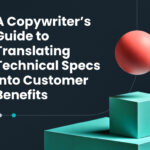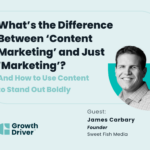With examples from healthcare
Technical specifications are the backbone of many technology and SaaS products, but let’s face it—they’re not always the most exciting thing to talk about or read. about. As a senior copywriter at ID, many of my clients are healthcare-focused, but the principles in this guide can apply to any industry where specs need to be translated into relatable customer benefits.
Copywriters have the unique challenge of bridging the gap between the technical details and the real-world value they bring to customers. Here’s a guide to help you make those specs shine.
Uncover the “why” behind each feature
Before writing a single word, take a deep dive into the purpose of each technical specification. What problems does it solve? For example, “high-frequency ultrasound” might sound impressive, but it means much more when explained as a tool for providing clearer images that lead to faster, more accurate diagnoses. Always connect the dots between the feature and its impact on the end user.
Speak to your audience’s priorities
Not everyone in your target industry values the same things, so it’s crucial to tailor your message. Here’s an example in healthcare:
- For HR benefits managers: Show how the project/service/tool improves employee well-being, simplifies benefits management, and aligns with organizational goals.
- For business executives: Focus on ROI, competitive differentiation, and long-term savings tied to employee productivity, health, and satisfaction.
- For clinicians: Focus on how the product enhances patient care or simplifies clinician workflow.
- For administrators: Highlight cost savings, efficiency, and compliance benefits.
- For IT teams: Emphasize compatibility, cybersecurity, and seamless integration.
Turn features into tangible benefits
Technical details are most effective when framed as benefits. Use this formula as a guide:
[Feature] + [what it does] = [why it matters]
For example:
- Feature: Real-time monitoring
- What it does: Provides immediate updates on patient conditions
- Why it matters: Enables faster, more informed clinical decisions in critical moments.
This approach makes the specs relatable and relevant.
Address their pain points first
Lead with the benefits that solve your audience’s biggest challenges. For instance, if you know your target healthcare providers are struggling with inefficient workflows, prioritize how your product/service saves time or reduces errors. Reserve secondary features for supplemental content like FAQs or brochures.
Bring the benefits to life through stories
Stories resonate more than bullet points ever will. Instead of simply listing features, illustrate them in action:
“In an emergency room where every second counts, our device’s real-time monitoring and seamless data integration helps clinicians diagnose conditions 30% faster, saving lives and easing staff workloads.”
Simplify with analogies and visuals
Complex specs can be easier to digest with the right analogy or visual aid. For example:
- Analogy: “Think of our AI-powered software as a co-pilot for radiologists, identifying details that they may overlook.”
- Visuals: Use infographics or charts to showcase improvements, comparisons, or workflows.
Support claims with evidence
Trust is essential in a lot of industries, but especially so in healthcare. Back up your claims with data, case studies, or testimonials when you can. Adding quotes from satisfied customers or respected professionals adds even more credibility. For example: “Clinicians using our system reduced patient wait times by 25%, improving satisfaction scores.”
Guide readers to the next step
Almost all pieces of content should end with a clear call to action. Whether it’s scheduling a demo or downloading a case study, make it easy for readers to take the next step. For example, “Ready to see how our solution can transform your operations? Contact us for a personalized demo today.”
How to apply these strategies in any industry
Translating technical specs into customer benefits is all about showing the real-world value of your product. When you focus on solving problems, speaking your audience’s language, and backing up your claims, you’re on your way to writing compelling copy that engages and converts. With the right approach, those specs can tell a story your audience actually wants to hear.




